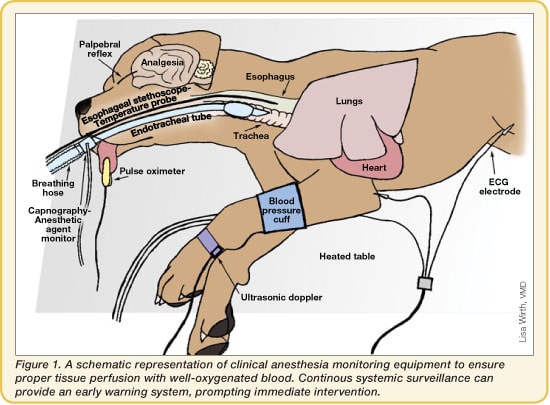
There is no such thing as risk-free anesthesia, however we make it our priority to keep that risk as low as possible. We do this by developing an individual anesthetic plan for each of our patients. Our veterinary nurses monitor each patient very closely while they are under anesthesia. We monitor important vital signs including heart rate, respiration rate, and body temperature. In addition to the trained senses of our astute doctors and nurses, some of the tools we may use to ensure your pet has a safe anesthetic procedure include an IV catheter, EKG monitoring to watch the heart rate and rhythm, SPO2 monitors to measure the amount of oxygen in the blood, temperature probes or thermometers. If you have any questions or concerns about your pet and anesthesia, be sure to speak with your pets’ veterinarian before the procedure.

